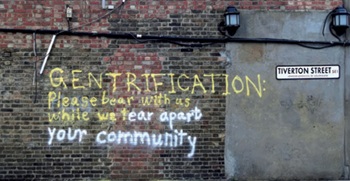The Health and Safety (Offences) Act 2008
Breaches in health and safety law could now land employers or their staff in prison, where previously they would have faced fines. The Health and Safety (Offences) Act 2008 came into effect in January 2009 and means that employees or their bosses could face up to two years in prison for failing to comply with legislation.
This applies to anyone who contributes to a health and safety offence, even if an accident or injury has not occurred. In other words, if someone behaves recklessly, and they have been properly trained, they could personally be prosecuted and given a custodial sentence. The reckless behaviour does not need to result in a serious incident, only the possibility of one. The same thing applies to anyone who fails to take proper care of other people's safety, including, for example, not carrying out a risk assessment or fire risk assessment.
The purpose of the law is to try to get employers to take its matters seriously. More than 200 people are killed every year in accidents at work, and many more are injured. The costs to businesses are huge. Even minor breaches of the rules now carry fines of up to £20,000, and whereas fines were previously related to specific serious breaches, people can now be fined for just about any offence.
The Act gives lower courts the power to impose higher fines for some offences, offering a real deterrent to those businesses and individuals that do not take their responsibilities seriously. Everyone has the right to work in an environment where risks to their safety are properly managed, and employers have a duty in law to deliver this.
The Act does not place any new duties on employers, and those following the law have nothing to fear. It is intended to target those few people who willfully ignore the regulations and put their staff or colleagues at risk by cutting corners or being careless.
--Safe2use
[edit] Related articles on Designing Buildings Wiki
Featured articles and news
The maintenance challenge of tenements.
BSRIA Statutory Compliance Inspection Checklist
BG80/2025 now significantly updated to include requirements related to important changes in legislation.
Shortlist for the 2025 Roofscape Design Awards
Talent and innovation showcase announcement from the trussed rafter industry.
OpenUSD possibilities: Look before you leap
Being ready for the OpenUSD solutions set to transform architecture and design.
Global Asbestos Awareness Week 2025
Highlighting the continuing threat to trades persons.
Retrofit of Buildings, a CIOB Technical Publication
Now available in Arabic and Chinese aswell as English.
The context, schemes, standards, roles and relevance of the Building Safety Act.
Retrofit 25 – What's Stopping Us?
Exhibition Opens at The Building Centre.
Types of work to existing buildings
A simple circular economy wiki breakdown with further links.
A threat to the creativity that makes London special.
How can digital twins boost profitability within construction?
The smart construction dashboard, as-built data and site changes forming an accurate digital twin.
Unlocking surplus public defence land and more to speed up the delivery of housing.
The Planning and Infrastructure Bill
An outline of the bill with a mix of reactions on potential impacts from IHBC, CIEEM, CIC, ACE and EIC.



















